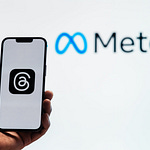In this episode, we contrast corporate optimism against a backdrop of enduring inflation, address the financial pressures facing low-income consumers and the distress signals from rising subprime delinquencies, and examine the unexpected challenges in the mass-market adoption of EVs.
The episode is based on this week’s newsletter that is available on Substack.
Positive Outlook
Summary: Companies are feeling positive about the outlook for 2024. Consumers remain resilient. Inflation is down and lower interest rates are anticipated. But the Fed may move slightly slower than markets are hoping.
A transcript of this podcast, with relevant images and quotes, is available for all subscribers after the show notes below. Our podcast is available on Apple Podcasts, Spotify, Google Podcasts, and Amazon Music.
Show Notes
00:00:00 Introduction
00:00:10 Prevailing Optimism
00:01:50 Low-Income Consumer Strains
00:03:54 EV Market Dynamics
00:04:56 Automaker Bets and Brand Loyalty
00:07:01 Hybrids Gaining Ground
00:07:54 Conclusion
Introduction
[00:00:00] Scott: Welcome everyone to a new episode of The Transcript podcast. You've got me, Scott Krisiloff, editor of The Transcript, along with Erick Mokaya, who's our lead author. We sent out a new issue of the newsletter on Monday.
Prevailing Optimism
"Looking ahead, 2024 appears to have a more stable outlook than may have been expected just a few months ago, with a reasonable probability of seeing the much-discussed soft landing. As Leon mentioned in his opening remarks, the U.S. economy appears relatively healthy with inflation and unemployment metrics continuing to trend favorably" - Nucor (NUE 0.00%↑) SFO Stephen Laxton
What we saw was that companies are feeling positive about the outlook. That's not surprising to most people. I think that companies are feeling more optimistic about 2024 but the thing that we did note is that markets may be getting a little bit ahead of the Fed who may be lowering interest rates more slowly than people are hoping for or expecting. And we got a CPI print this morning that showed that maybe inflation is a little bit more sticky than people were hoping for. And so that could keep the Fed on hold as well. That could impact the outlook for the rest of the year as well. Erick, any thoughts?
[00:00:47] Mokaya: Yeah, I agree. I think what I've seen, especially in most earnings calls that I've read, is that companies are quite positive about the year and especially about the second half of the year based on the expectations that the Fed will reduce rates at some point before or during the summer this year.
So I don't know. As you say, maybe they're getting way ahead of themselves because the consumer has been doing well for the past couple of years, but they are at a point where they're struggling a bit. The expectations for most companies are that the Fed would ease the burden on consumers by reducing rates and that would boost a bit of confidence in markets and companies and company execs.
So yeah, the inflation is sticky here. There are lots of companies that are noting that inflation is not yet done. It's lower, but it's still at a high end, so to speak. The Fed would not be able to act until they say they have enough data to prove that inflation has gone down substantially. The expectation from company execs is that the Fed is going to lower rates in the 2nd half of the year.
Low-Income Consumer Strains
And the most impacted people so far are the low-income consumers. That has been true for a while. They're trading down pretty significantly. And because of that, I think because of the high prices that they've experienced the past couple of years, they're not able to handle them so well. So most companies, especially the retail companies, what I've noted is they're saying that they've hit their peak in terms of pricing increases because if they keep increasing further, volume is going to decline quite significantly a bit more. Any thoughts on that, especially on the low-income consumer and how they've been impacted so far?
[00:02:27] Scott: Yeah, I think the lower-income consumer is a cross-current relative to what expectations are in the market because we've been seeing for a long time now, probably 18 months, that the low-income consumer is displaying behaviors of trading down, like you said, more price sensitivity. And that their balance sheets are getting weaker. One data point that we pulled out that's particularly concerning was from Equifax talking about delinquencies among subprime consumers are as high or higher than they were in 2009, which I think is something that is not on anybody's radar screen.
"Credit card delinquency rates for prime consumers, which represent about 80% of the market are stable and at historically low levels at less than 1%, but above pre-pandemic levels…Delinquencies for subprime consumers are above pre-pandemic levels, as well as above the levels we saw in 2009. And any credit tiding that we've seen has been largely in fintech and subprime, which started well over a year ago" - Equifax (EFX 0.00%↑) CEO Mark Begor
In fact, it's so far off from what people are talking about that I actually don't even know that I really believe the data. I need to go back and look at that data. What Equifax is talking about in terms of subprime delinquencies, because obviously, subprime delinquencies were extreme in 2009. So if they're that high right now, that would be a surprise to markets I think. Any thoughts on that specifically?
[00:03:25] Mokaya: I was actually wondering about that because Equifax is a company I've tracked for a while. So I think at some point they said that the delinquencies are at pre-pandemic levels. And now they're saying you have to go way back to 2009. So my question was how big is Equifax in terms of the kind of consumers they interact with?
[00:03:43] Scott: Equifax is huge. They're one of the three largest credit rating bureaus. So they touch basically every consumer in the United States. So this is notable. They have good data. Yeah, this is definitely a noteworthy quote.
EV Market Dynamics
"Now someone portrayed the change in the EV market as Darwinian. That could be a slow evolutionary change, but we think this has been a seismic change in the last six months of last year. That will rapidly sort out winners and losers in our industry. Now the catalyst for that seismic change is a combination of EV manufacturers cutting their price by 20% across all major geographies and a tremendous amount of capital flowing and a ton of new capacity into one single segment, two-row crossovers." - Ford Motor (F -0.08%↓) EVP & President of Global Markets James Farley
[00:03:54] Mokaya: Yeah, but beyond that, there was the issue of EV markets, quite a seismic shift that is happening in terms of how the market is positioned. I should say I used an EV for long-distance travel during Christmas and my experience was actually quite negative in the sense that we had to put up with it, a four-hour journey, but it extended to eight hours because of bad weather. But the important thing is that you have to plan your journey in such a way that you have points where you stop for almost half an hour to charge. And then that's when I realized, like long distance, these things are not yet at the level where you can actually drive for such a long distance as you would under ICE vehicles. So I think that's the same thing that's happening in the market. The early adopters are done. And now the people who are supposed to buy them for mass market adoption are the guys who really need to think through what they need to do with the electric vehicles, so to speak. What's your experience so far with them?
Automaker Bets and Brand Loyalty
[00:04:56] Scott: Yeah. This is a super interesting industrial cycle to be watching because obviously the big automakers - GM, Ford, and others, Volkswagen really bet heavily on the transition from the internal combustion engine to the EV. And we're seeing that, as you mentioned, this cross of a chasm from the early adopter into mass market adoption. And we may be seeing that mass market demand isn't there, which is surprising to me as well. Because thinking back 12 months ago, when these companies were making these bets, it really felt like we were making a transition to EVs. And so to see that maybe the demand isn't there again is surprising. Part of the reason it may be surprising to me is because I live in California and Penske was talking about how 50 percent of their EV sales are in California. So there's a lot of really negative data points around EVs, though, not only from Penske where inventories are piling up, but also among the rental agencies. Hertz was talking about cutting a third of their EV fleet because there's no demand for the EVs from a rental standpoint. It'll be interesting to see how far ahead of itself the industry got, and how big of a glut of inventories will happen. And obviously, as a result of that glut of inventories, there will be a trend towards price cutting. So you're actually starting to already see some really good deals on EVs like I got a flyer from Volkswagen the other day talking about an $88 a-month lease on on one of their ID.4, which feels like an extremely low price for a 45, $50, 000 vehicle. So somebody is taking a huge loss on that. Again, if you're looking at these automakers, I think it's probably most acute among those mainstream automakers like GM, Ford, and Volkswagen, that were getting into this space without strong brands in EVs. Those companies’ customers didn't necessarily want to follow them into EVs. So this may be the biggest penalty for those companies.
Hybrids Gaining Ground
[00:07:01] Mokaya: I'm actually going to maybe after the episode check out Volvo because Volvo had targeted by 2030 to face out all ICE and to be exclusively EV. So I wonder, consumers, as you said, have not followed them to that plan that they had in mind. But the big gainers, and I think I saw a note from Morgan Stanley that said we apologize to Toyota and Hybrids. So I think the big winners here are actually hybrid where consumers want a little bit of, okay, we can charge and reduce our consumption of fuel, but at the same time, we can experience the possibilities of ICE vehicles. So I feel like those are the big winners. Toyota had a very good quarter in that regard. And the big manufacturers, I think the challenge that they're having is that currently, it's in the phase where investors want to see profitability or at least a path to profitability.
Wrapping Up
Any other thing that you have picked up in earnings?
[00:07:55] Scott: No, I think that's a good point.
[00:07:56] Mokaya: That's a good place to close this week. Thank you so much for joining us on our weekly episode. See you again next week as we continue our tracking earning seasons and the key quotes from earnings this week Thank you and bye. Bye.











